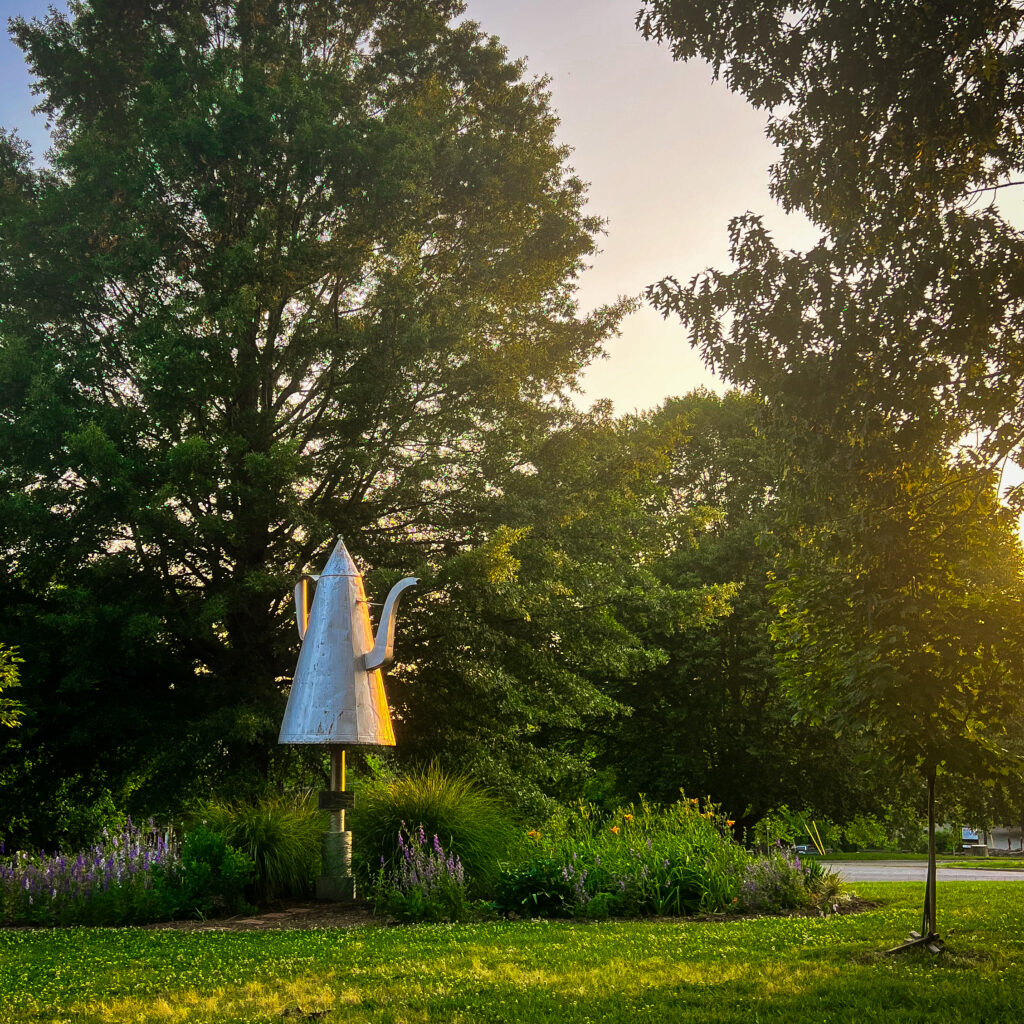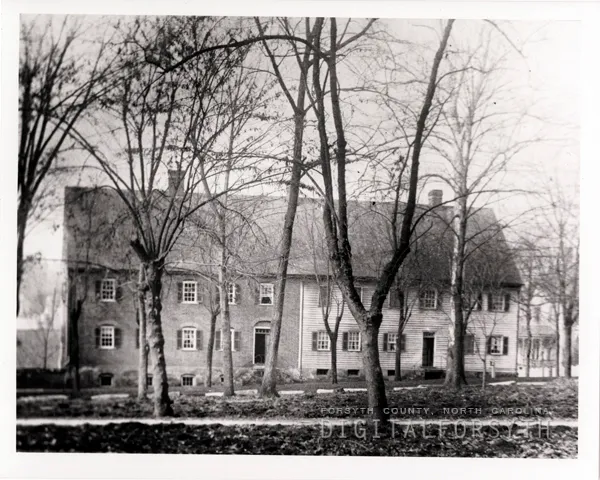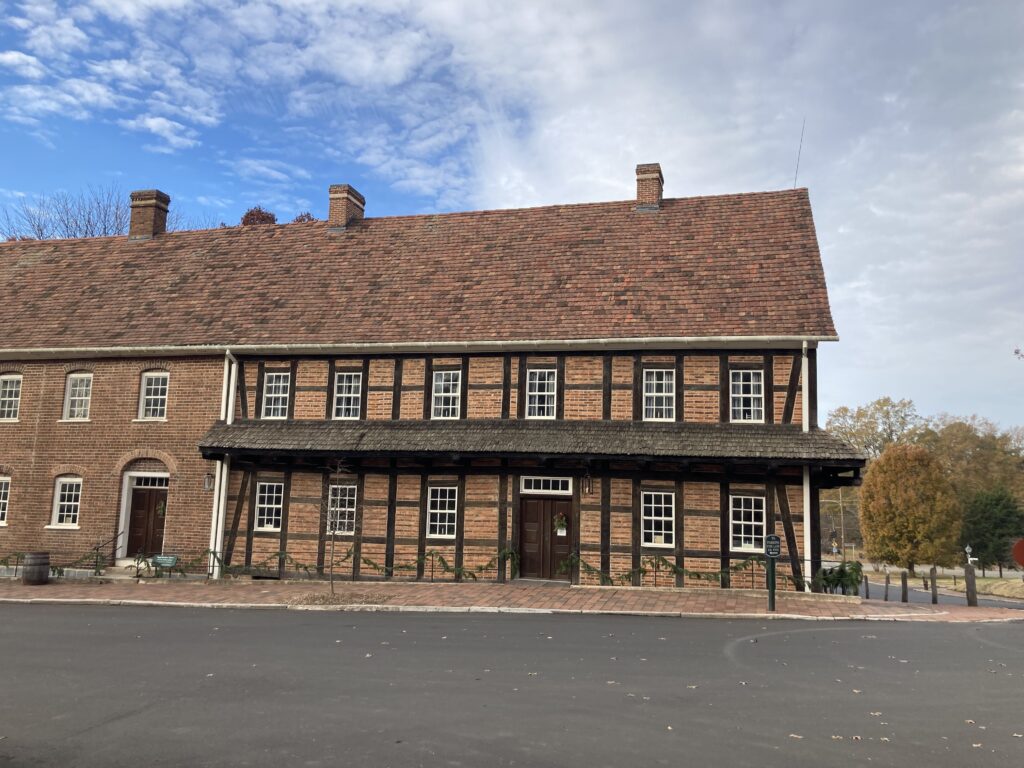
Old Salem is a historic district of Winston-Salem, known for its preserved Moravian community and heritage. It’s a living history museum that showcases the lifestyle, culture, and traditions of the Moravian settlers who founded the area in the 18th century. The district includes restored buildings, gardens, and craft demonstrations, offering visitors a glimpse into early American life. Old Salem’s history makes it a gold mine for hidden gems and remnants from the past, and in this article, we’re sharing eight hidden gems you can find in Winston-Salem’s Old Salem.
Winston-Salem’s Brookstown Inn is the oldest hotel in NC, and there are rumors of paranormal activity from a resident ghost named Sally in room 401.
When this building was still a mill, the fourth floor was a dormitory for some women working there. As the story goes, “Sally” was in a scuffle with another resident, who pushed her down the elevator shaft. Hotel guests have reported seeing Sally’s full-body apparition and hearing the sound of a woman screaming at night.
At the heart of Old Salem lies a plaque commemorating the first official Independence Day celebration in the United States on July 4, 1783.

On July 4, 1966, the 200th anniversary of Winston-Salem, the city placed the plaque in the location of the original celebration.
Old Salem’s Mickey Pot is the country’s oldest giant roadside coffee pot, standing at 7 feet, 3 inches tall.

The Mickey Pot is in Old Salem Moravian Village in Old Salem, to the left, on a grassy island, at the corner of Brookstown and Main St. It’s sometimes difficult to see from the one-way street because of the overgrown trees.
The Mickey Pot, crafted in 1858 to help the Mickey Brothers advertise their tinsmith business, can hold 11,840 cups of coffee. Atlas Obscura says, “The (Mickey Pot) has been a common subject of government debate… and seen as a distraction to drivers passing by. Since horse and buggy times, traffic accidents have frequently occurred around the massive vessel. The post has been removed several times, considered a nuisance or “a blatant violation of the town ordinance regulating advertising signs,” but vigilant historical societies and local sentiment always prevailed in putting it back up.”
One hundred thirty-one engraved names are on a 12-foot granite slab in front of the historic St. Philips Church.
In the 1990s, St. Philips Church underwent renovations. During the renovation, workers uncovered an African American graveyard with 131 graves dating from 1816 to 1859. The names on the granite slab represent these individuals.
Outside of Goler Metropolitan AME Zion Church is a marker commemorating Dr. Martin Luther King Jr.’s visit to Winston-Salem on April 13, 1964.
Dr. Martin Luther King Jr. spoke to over 1,000 people in Winston-Salem about the importance of voting. The event was just four years before his assassination.
Near Old Salem on Academy Street is one of the city’s oldest surviving bridges, dating back to 1883 (30 years before the towns of Winston and Salem merged).
The old brick and stone barrel-vaulted bridge crosses the Tar Branch Creek, which is still safe to cross. The current bridge replaces an earlier wood bridge. Although masonry construction of bridges is typical in northern states and railroad bridges, it is rare in the South for road traffic, making this bridge unique.
At the intersection of First and Main Streets is a small stone emblem that marks the former dividing line between the towns of Winston and Salem.
The towns were consolidated on May 9, 1913, creating the city of Winston-Salem. The marker, which the city placed in 1963 to commemorate the fiftieth anniversary of the cities joining, contains a misprint as it states that the towns consolidated on May 13.
Old Salem’s original Single Brothers House had front steps and cellar windows.


In 1890, the street elevation was raised for streetcars, covering the front steps and cellar windows of the Single Brothers House in Old Salem.

